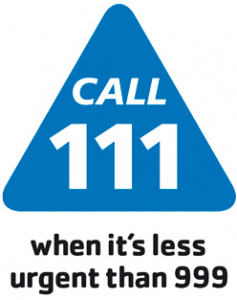Social StoriesTM were originally created by Carol Gray in 1991 and are widely used to support social understanding in many different contexts. They are about specific events or situations, with information about what to expect and what to do. Stories should be tailored to the individual, taking into account their own needs, and their own interests.
Social stories can help in situations that are difficult because they are concrete, they increase structure and predictability and can reduce anxiety.
It should be noted that there are specific criteria for what is a Social StoryTM and the trademarks are owned by Carol Gray. Information can be found at www.carolgraysocialstories.com.
Social stories could be used in all sorts of different situations, for example, bedtime or school time, social interactions, or before a significant change to a routine. Specific examples of social stories and support on how to use them can be found widely on the internet, or by asking your Speech and Language Therapist.
Writing a social story:
A helpful story has a clear specific goal – identify the situation that is difficult, and the key features of the situation – where does it happen, when does it happen, who is involved, what happens?
It should be written from the child’s perspective, using positive language in the first person (i.e. “I”) and in the present tense.
There are several different types of sentences that can be used:
- descriptive sentences: these describe the situation, e.g. “I love to play with the fire engine”.
- directive sentences: these tell the child what they should do in this situation, e.g. “When someone is playing with the fire engine, I can say, ‘Can I have the fire engine please?’”.
- perspective sentences: these describe how other people will feel e.g. “Other people want to play with the fire engine too”.
- affirmative sentences: these express a shared social value or opinion, e.g. “It is okay to wait”.
- control sentences: these identify strategies that the child can use to remind himself how to behave, e.g. “I can play with the fire engine when someone else puts it back in the box”.
- cooperative sentences: these can explain who will provide help and how, e.g. “My teacher will help me stay calm while I wait for my turn”.
Social stories should be encouraging - there should be at least double the amount of describing sentences (descriptive, perspective, affirmative or cooperative) than there are coaching sentences (directive and control).
You can use words like “sometimes” or “usually” when outcomes are not always the same.
A story should be at the right level for the child to understand, and include pictures and visual support to help understanding.
It should take into account why the child might have difficulty in the specific situation.
Social stories don’t need to be professionally produced – they can be written at home, with your own drawings.
Recommendations for success when using social stories
Try a simple story about a non-challenging issue to begin with, rather than tackling a big battle. This helps the idea of a social story to become reassuring and comforting.
Social stories should never be used as a punishment for misbehaviour, as this associates the stories with negative feelings.
Present the story to the individual at a time when everyone is feeling calm and relaxed. This will maximise the individuals learning and help the person to develop positive associations with the story.
Introduce the story using simple, clear language e.g. I have written this story for you. It is about thunderstorms. Let’s read it together now. Soon we will review it.
Review (read) the story as often as required - some social stories can be reviewed initially once a day, and others immediately before the situation for which they were written.
Be positive, reassuring and patient when reviewing the story and ensure the environment is quiet, comfortable and free of distractions.
Involve others in the story where appropriate. For example, a story that is focussed on a situation or activity at home might also be reviewed with the child’s teacher or learning support assistant. You might use the same stories, or different stories in different settings, but it may help to keep the structure and presentation similar to maintain familiarity.
Introduce one story at a time to make sure the child does not become overwhelmed with information.
Fade out the story by either reading less often, or re-writing parts of it to include new skills (or leave gaps for the child to complete themselves). Remember that change can sometimes be distressing - some people keep a folder of stories to add to and keep the previous ones available.




